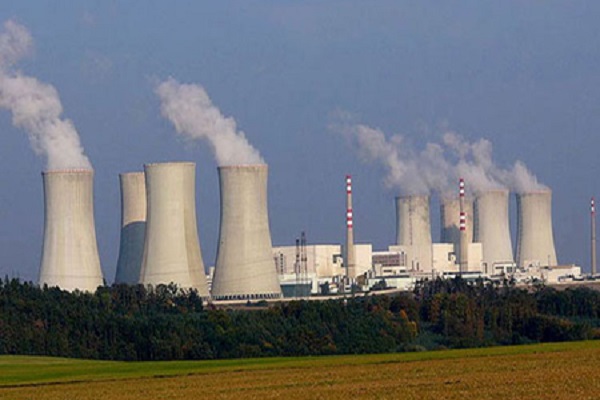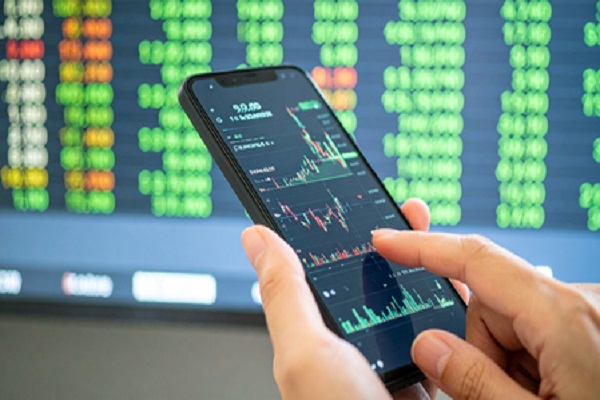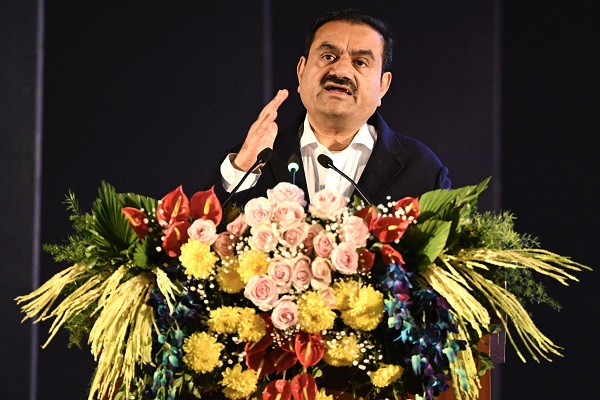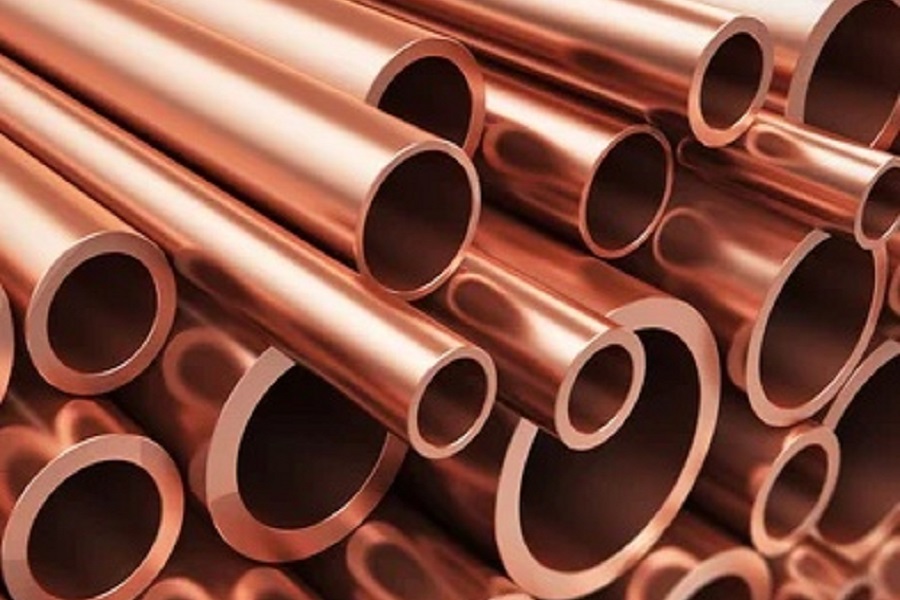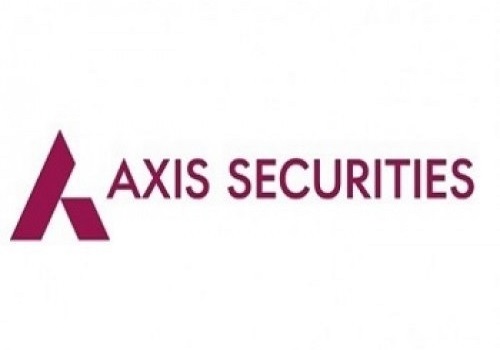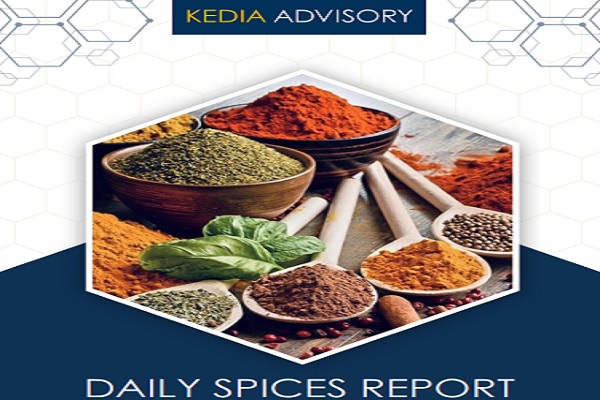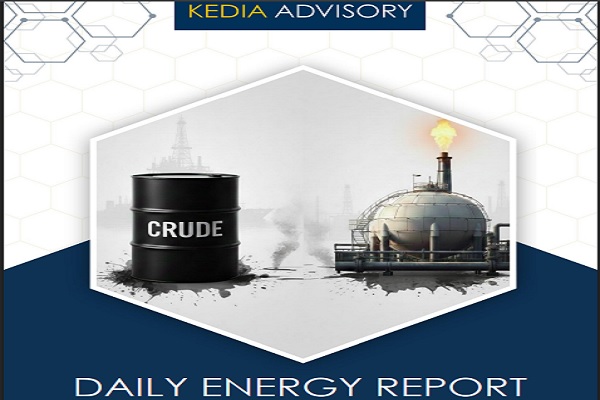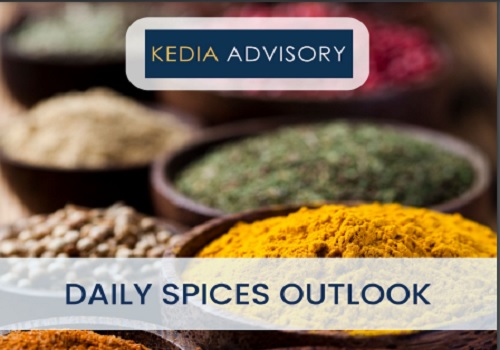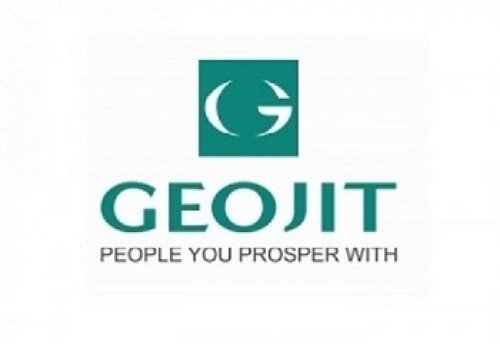Jeera trading range for the day is 19390-19730 - Kedia Advisory
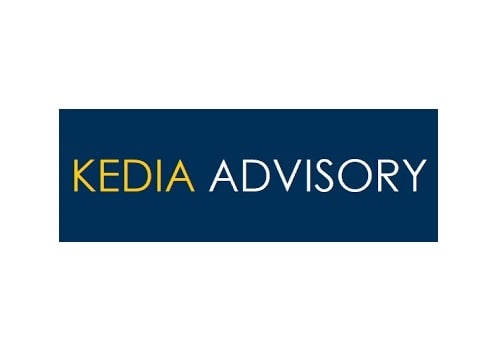
Gold
Gold settled higher by 0.57% at 98,024 as the yellow metal found support from a weaker dollar and continued geopolitical tensions, including the EU’s latest sanctions on Russia’s energy sector. However, upside momentum was somewhat capped by resilient U.S. economic data and easing fears about the Federal Reserve’s independence after President Trump stepped back from removing Fed Chair Jerome Powell. With the Fed’s rate trajectory still unclear amid sticky inflation and political pressure for cuts, traders await the upcoming FOMC meeting for stronger cues. On the global trade side, Swiss customs data showed gold exports surged 44% month-on-month in June to their highest since March, driven by increased shipments back to UK vaults via Swiss refineries. This movement lifted gold holdings in London vaults by nearly 178 tonnes to 8,776 tonnes, the highest since August 2023, pointing to steady investor appetite for physical bullion. In contrast, physical demand in top Asian hubs remained soft due to high prices. In India, record-high local prices pushed June imports down 40% year-on-year to a mere 21 tonnes — a two-year low — with dealers offering deeper discounts of up to $10 per ounce to attract buyers. In China, premiums narrowed to a $5 discount to $10 premium range versus $10–$25 the week before, reflecting cautious buying interest. Technically, gold remains in a fresh buying phase as open interest increased 0.84% to 10,695 while prices rose by 551. Key support is now at 97,515; a break below could test 97,000. Resistance is at 98,350, and a move above this level could push prices further towards 98,670 in the short term.
Trading Ideas:
* Gold trading range for the day is 97000-98670.
* Gold prices firmed amid a weaker dollar and persistent geopolitical tensions.
* U.S. retail sales in June exceeded expectations, while initial jobless claims too were better.
* India's gold imports in June fell 40% from a year ago to 21 tons, their lowest level in more than two years
Silver
Silver settled higher by 0.55% at 112,950, supported by a slight pullback in the dollar index and dovish signals from Federal Reserve officials. Fed Governor Christopher Waller’s statement favoring a 25-basis-point rate cut this month, along with San Francisco Fed President Mary Daly hinting at two cuts before year-end, bolstered market sentiment. However, mixed views within the Fed — including Governor Adriana Kugler’s caution on holding rates steady due to tariff-driven inflation risks — kept gains somewhat in check. Meanwhile, housing data from the U.S. offered a mixed but overall stable macro backdrop, with June housing starts rebounding by 4.6% and building permits ticking up slightly, both broadly in line with expectations. On the demand side, optimism continues to build in the silver market. Silver ETPs attracted net inflows of 95 million ounces in the first half of 2025, already surpassing last year’s total and pushing global holdings to 1.13 billion ounces — just 7% below the February 2021 record high. Retail investment in India remains firm with a 7% year-on-year increase despite high prices, while Europe’s recovery continues to lend support. Technically, silver remains under fresh buying as open interest rose 5% to 18,122 lots while prices gained 616. Support is now at 112,410, with a break below likely testing 111,865. Resistance is seen at 113,595; a move above this could open the door for a test of 114,235 in the near term.
Trading Ideas:
* Silver trading range for the day is 111865-114235.
* Silver up as dollar dips after Fed’s Waller backs rate cut to counter risks.
* San Francisco Fed President Daly echoed expectations for two rate cuts before year-end amid slowing momentum.
* Fed Chair Powell dismissed allegations of mismanagement amid speculation Trump might seek to remove him.
Crude oil
Crude oil edged up by 0.10% to settle at 5,798 as the market balanced fresh geopolitical risks, supply disruptions, and mixed demand signals. The European Union’s new 18th sanctions package against Russia is set to tighten restrictions on Russian crude by lowering the G7 price cap to $47.6 per barrel, aiming to squeeze Moscow’s oil revenues further. Meanwhile, regional tensions added more upside pressure, with drone attacks in Iraq’s Kurdistan region cutting output by up to 150,000 barrels per day and Israeli strikes in Syria fueling wider market uncertainty. Seasonal factors also played a role, with global consumption averaging a robust 105.2 million barrels per day in July so far. In the US, crude inventories dropped sharply by 3.859 million barrels last week, reversing two weeks of builds, which supported prices. However, refined fuels data showed gasoline and distillate stocks rose significantly, by 3.399 million and 4.173 million barrels respectively, signaling mixed downstream demand trends. On the production front, the US Energy Information Administration revised its 2025 output forecast lower to 13.37 million barrels per day, slightly down from its previous estimate of 13.42 million bpd. Technically, crude oil remains under fresh buying interest as open interest jumped 28.38% to 11,151 contracts while prices inched up by 6. Immediate support is pegged at 5,746, and a drop below could see a test of 5,693. On the upside, resistance is now seen at 5,891, with a break above likely pushing prices toward 5,983.
Trading Ideas:
* Crudeoil trading range for the day is 5693-5983.
* Crude oil prices rose as the EU approved its 18th sanctions package targeting Russia’s oil industry.
* Drone attacks in Iraq’s Kurdistan region disrupted up to 150,000 barrels per day of oil output.
* Seasonal summer travel demand supports global oil consumption, averaging 105.2 mbpd in July.
Natural gas
Natural gas prices slipped by 0.85% to settle at 303.5 as the market weighed robust supply fundamentals against supportive weather-driven demand. Despite persistent heat across the Lower 48 U.S. states boosting air-conditioning needs—and with next week forecast to bring some of the hottest days of this summer—ample storage levels and record output limited any significant upside. Latest data highlighted that U.S. dry gas output continues to set new benchmarks, averaging 107.1 billion cubic feet per day (bcfd) so far in July, up from the record 106.4 bcfd in June. Daily output even touched an all-time high of 107.92 bcfd on July 14. At the same time, storage injections remain healthy. U.S. utilities added 46 billion cubic feet (bcf) to storage for the week ending July 11, comfortably above the five-year average build of 41 bcf for this period, bringing total inventories to 3.052 trillion cubic feet—about 6.2% above the seasonal norm. Looking ahead, the U.S. Energy Information Administration projects both output and demand will continue setting records. Production is forecast to rise to 105.9 bcfd in 2025 and 106.4 bcfd in 2026, while consumption will hover near record highs above 91 bcfd. Technically, the market showed signs of long liquidation, with open interest falling 14.5% to 15,954 contracts while prices dropped 2.6. Immediate support is seen at 299.8 and a break below may test 296. On the upside, resistance stands at 309.7, with a breakout potentially driving prices towards 315.8.
Trading Ideas:
* Naturalgas trading range for the day is 296-315.8.
* Natural gas dropped amid ample amounts of gas in storage and record output.
* Record production should help energy firms keep storage injections above normal in the coming weeks.
* US gas stockpiles are currently about 6% higher than the five-year seasonal average for mid-July.
Copper
Copper prices rose by 1.05% to settle at 891.85, buoyed by stronger-than-expected U.S. macroeconomic data and renewed hopes for increased Chinese buying following the recent price dip. Positive signals came from the U.S., where retail sales rebounded by 0.6% in June after May’s decline, and weekly jobless claims fell, indicating resilient consumer spending and steady job growth. This underpins demand for industrial metals like copper, even as markets keep a close eye on the looming August 1 deadline for the U.S.’s proposed 50% import tariff on copper—an event expected to reshape global flows. China’s refined copper production hit a record high in June, up 14% year-on-year, while imports rebounded 8.7% last month after two straight months of declines. However, annual import volumes remain below last year’s levels due to large-scale stock transfers to the U.S. ahead of the tariffs. On the supply side, Chile’s Codelco and Antofagasta both reported solid production increases for the first half of 2025, reinforcing healthy supply fundamentals. Still, the International Copper Study Group’s data showed the global refined copper market swung back to a deficit of 50,000 metric tons in April from a surplus in March, highlighting tightness that may support prices if demand recovers further. Technically, the market is under short covering as open interest fell sharply by 18.73% to 4,569 while prices climbed 9.25. Immediate support lies at 885.9; a break below could test 879.9. On the upside, resistance is pegged at 895.2, with further gains likely if prices breach 898.5.
Trading Ideas:
* Copper trading range for the day is 879.9-898.5.
* Copper rose supported by stronger-than-expected U.S. economic data and expectations of increased Chinese buying.
* U.S. retail sales increased 0.6% in June after an unrevised 0.9% drop in May.
* Copper inventories in warehouses monitored by the SHFE rose 3.8% from last Friday.
Zinc
Zinc prices surged by 2.59% to settle at 265.25, driven by renewed optimism over potential stimulus measures from China, the world’s top zinc consumer. Market sentiment is buoyed by expectations that China’s upcoming Politburo meeting may unveil fresh economic policies to support growth, boosting demand for industrial metals like zinc. The metal also found strength from tightening supply conditions, as Chinese smelters face mounting pressure to trim production amid capacity exceeding actual consumption, while heavy rains have disrupted operations in some southern regions. Additionally, India’s crude steel output jumped 8.6% year-on-year, supporting zinc demand, as the metal is vital for galvanizing steel to prevent corrosion. On the supply side, global mined output is tightening. Teck Resources’ Red Dog Mine, the world’s largest zinc mine, reported a 20% annual drop in production to 145,300 tonnes in Q1, while Australian smelter Nyrstar plans to cut output by 25% this year due to ore shortages and lower treatment charges. Despite China’s Q2 GDP growth slowing to 5.2% from 5.4% in Q1, it still surpassed market forecasts of 5.1%, signaling some resilience. Technically, the zinc market is witnessing fresh buying interest, with open interest jumping by 16.73% to 2,930 as prices gained 6.7. Zinc is now finding immediate support at 260.9, with a break below exposing 256.4. On the upside, resistance is seen at 267.7, and a move above could lift prices toward 270 in the near term.
Trading Ideas:
* Zinc trading range for the day is 256.4-270.
* Zinc climbed driven by optimism over possible stimulus measures from China.
* Zinc supply is tightening as Chinese smelters face pressure to cut production due to capacity outpacing demand.
* Zinc inventories in warehouses monitored by the SHFE rose 9.3% from last Friday, the exchange said.
Aluminium
Aluminium prices climbed by 1.35% to close at 252.4, supported by renewed buying from Chinese traders, optimism over a possible stabilization in U.S.-China trade relations, and an uptick in broader market risk appetite. Positive sentiment was fuelled after China’s commerce minister signaled efforts to steady trade ties with the U.S., which boosted confidence across base metals. However, inventories on the Shanghai Exchange rose by 5.5% from last week, hinting at steady domestic availability despite production restrictions. On the supply side, China’s aluminium production pace is constrained by its annual cap of 45 million tonnes, aligning with its carbon emission goals. June output dipped by 3.23% month-on-month, although cumulative output for the first half of the year still rose by 3.3% YoY to 22.38 million tonnes. Supply from Shandong has been curtailed as plants shut down older capacity for replacement, with new capacity due online in Yunnan. Japan’s aluminium premiums for July–September fell 41% from the previous quarter to $108 per metric ton, underscoring softer demand and sufficient supply in Asia. Stocks at three major Japanese ports dropped 4.3% month-on-month to 316,700 tonnes, indicating ongoing inventory drawdowns. Technically, the market is witnessing short covering as open interest declined by 10.28% to 2,340 while prices gained 3.35. Aluminium is now finding immediate support at 250.1, with a break lower likely to test 247.8. On the upside, resistance is seen at 253.6, with further gains towards 254.8 possible if sentiment remains firm.
Trading Ideas:
* Aluminium trading range for the day is 247.8-254.8.
* Aluminium gains driven by Chinese buyers, hopes for a U.S.-China trade deal.
* China's commerce minister said the country, wants to bring its trade ties with the U.S. back to a stable footing.
* Aluminium inventories in warehouses monitored by the SHFE rose 5.5% from last Friday
Turmeric
Turmeric edged higher by 0.24% to settle at 13,352 per quintal, supported by short covering after recent losses triggered by expectations of higher acreage this season. Improved rainfall during the sowing window has encouraged farmers to expand planting by an estimated 15–20% as turmeric remains a relatively profitable option compared to other crops. However, despite the anticipated increase in sown area—now pegged at 3.30 lakh hectares for 2024–25, up 10% from the previous season—actual production gains may be muted. Weather-related challenges, particularly untimely rains, pose a risk to productivity. The new crop is already showing signs of yield stress, with the Nanded region reporting smaller rhizomes and some crop rot, which could reduce overall yields by 10–15% compared to last year’s output of 10.75 lakh tonnes. Arrivals in key mandis rose marginally to 13,660 quintals from 11,940 quintals in the previous session, pointing to steady supply. Around 50–55% of the total new crop has already been traded, and harvesting is ongoing, likely keeping arrivals active in the coming weeks. On the export front, sentiment is upbeat with turmeric exports during April–May 2025 jumping 8.37% year-on-year, driven by a robust 28.41% surge in May exports over April. Technically, turmeric is under short covering as open interest fell slightly by 0.14% to 17,710 while prices rose 32. Immediate support is pegged at 13,296, with further downside possible to 13,238. Resistance is seen at 13,396; a break above this could lift prices towards 13,438 in the near term.
Trading Ideas:
* Turmeric trading range for the day is 13238-13438.
* Turmeric gained on short covering after prices dropped due to expected increase in acreage.
* Turmeric acreage is expected to increase by 15-20% this season, supported by low competitive crop prices.
* In April 2025 around 14,956.80 tonnes were exported as against 14,109.10 tonnes in April 2024 showing a rise of 6%.
* In Nizamabad, a major spot market, the price ended at 14039.7 Rupees dropped by -0.45 percent.
Jeera
Jeera settled slightly higher by 0.10% at 19,565 per quintal, recovering modestly on short covering after recent declines triggered by weak domestic and export demand following the end of the retail season. The broader sentiment, however, remains cautious as traders highlighted that sufficient carry-forward stocks and subdued overseas buying are likely to cap any major upside in prices for now. Market fundamentals indicate that farmers are still holding about 20 lakh bags of cumin, but with only 3–4 lakh bags expected to be traded by season’s end, a significant carryover of nearly 16 lakh bags is likely to weigh on sentiment. Production for the current season is pegged at 90–92 lakh bags, slightly lower than last year’s 1.10 crore bags, owing to some reduction in sowing area but balanced by favourable growing conditions in key producing states like Gujarat and Rajasthan. Globally, supply constraints in other major producers—Syria, Turkey, and Afghanistan—due to geopolitical and weather-related challenges could have offered some support, but India’s weak export momentum continues to offset this. Jeera exports during April–May 2025 slumped by 27% year-on-year to 42,925 tonnes, although May saw a month-on-month recovery of nearly 18%, suggesting some pick-up in overseas buying. Technically, jeera is witnessing fresh buying as open interest increased by 0.78% to 6,207 contracts while prices edged up 20. Immediate support is at 19,480, with further downside possible to 19,390 if selling resumes. Resistance is now pegged at 19,650, and a move above could lift prices towards 19,730 in the near term.
Trading Ideas:
* Jeera trading range for the day is 19390-19730.
* Jeera gains on short covering after prices dropped due to weak domestic post retail season.
* Only 3-4 lakh bags are expected to be traded by the end of the season, leaving a carry-forward stock of about 16 lakh bags
* Total arrivals witnessed a marginal increase to 12,000 bags (55 kg each) as against 11,800 bags on the previous day.
* In Unjha, a major spot market, the price ended at 19957.2 Rupees dropped by -0.25 percent.
Views express by all participants are for information & academic purpose only. Kindly read disclaimer before referring below views
